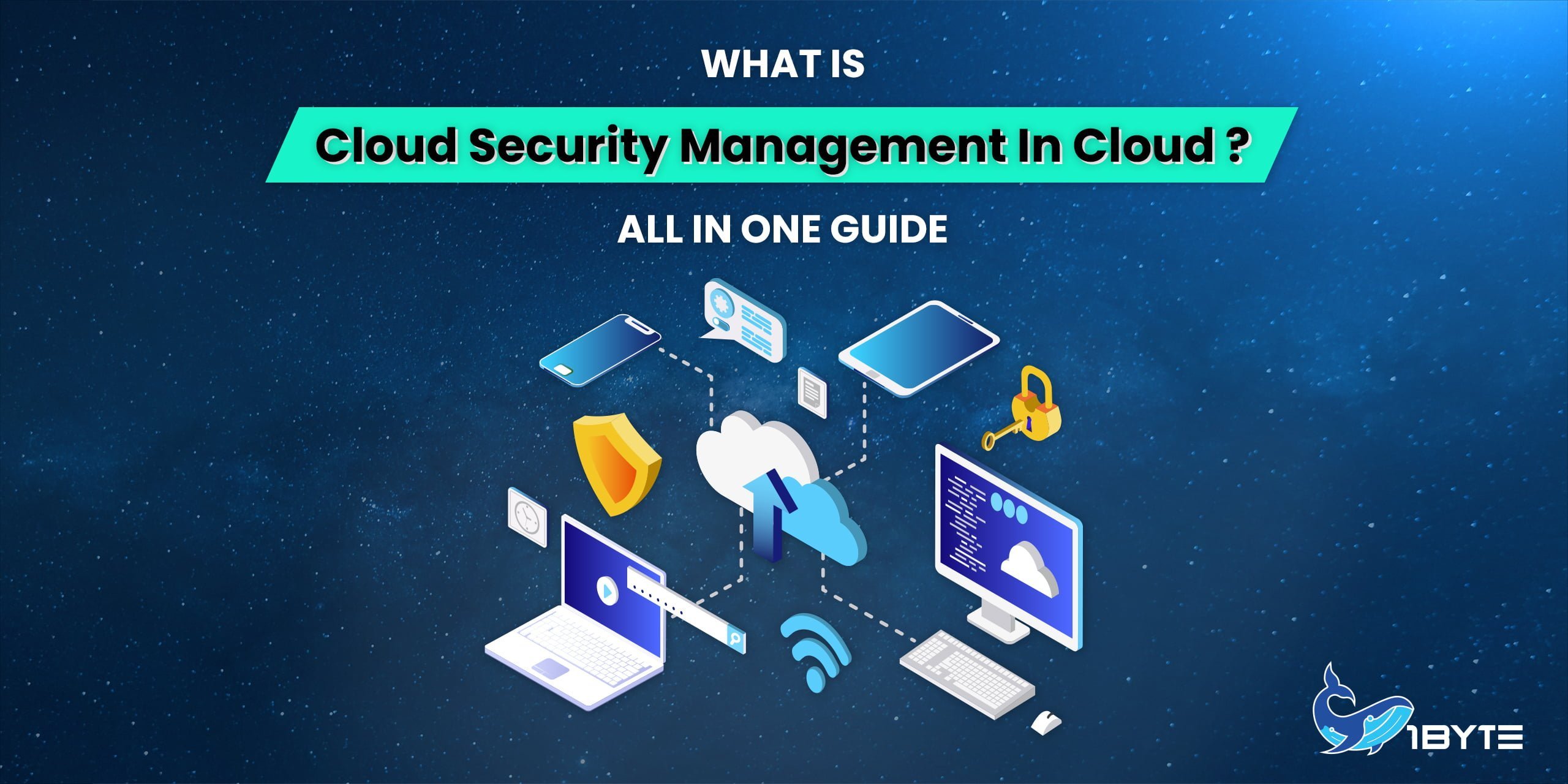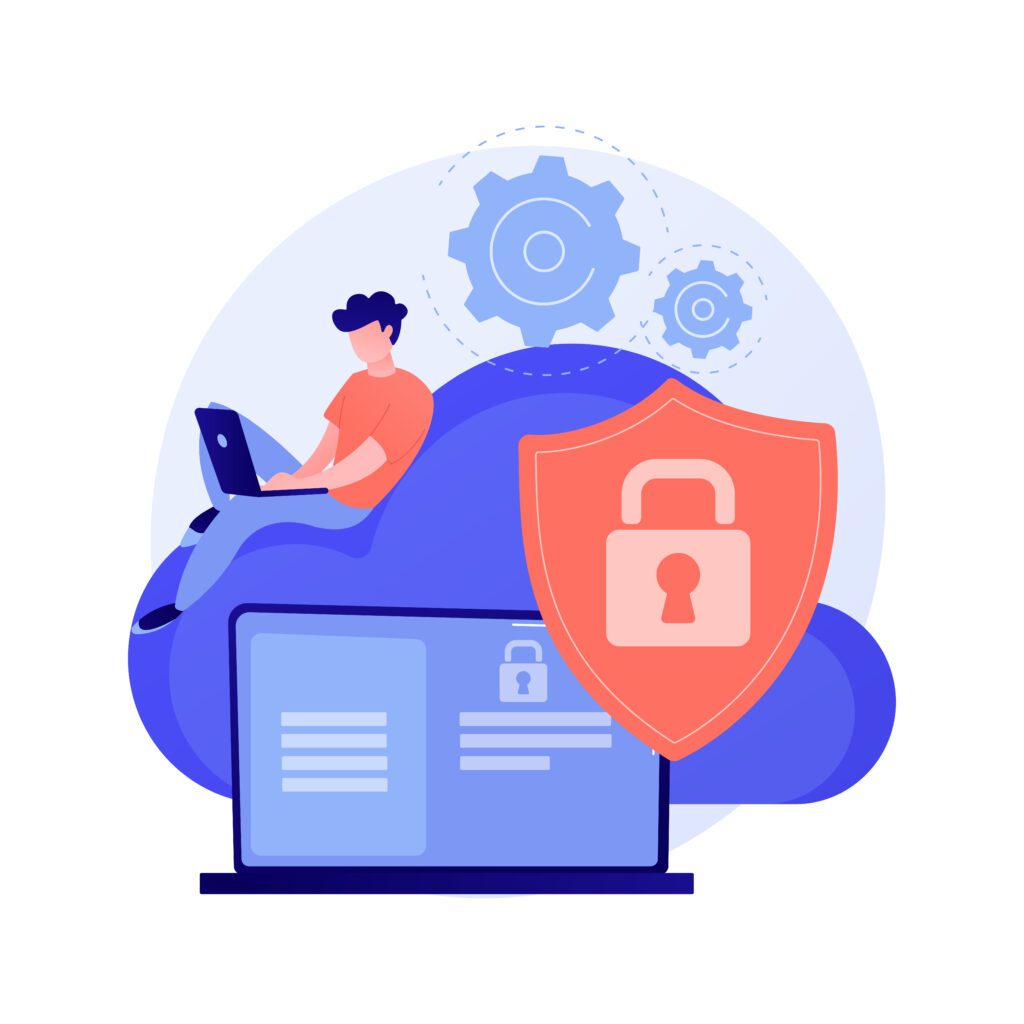What Is Cloud Security Management in Cloud? – All In One Guide

Cloud security management is the complex process of ensuring that data and resources stored in the cloud are protected from unauthorized access and potential threats. It includes identifying and classifying data, implementing security controls, and monitoring activity to detect and respond to incidents. This is a critical element of any organization’s overall security strategy. With the increasing adoption of cloud services, it is important to understand the risks and how to properly protect data in the cloud.
Why Is Cloud Security Important?
Cloud computing has transformed the business world, offering companies a range of advantages that were previously unattainable. From next-level customer service to enhanced flexibility and scalability, the benefits of migrating to the cloud are vast. However, with such a complex system come new risks and vulnerabilities. And that’s where cloud security comes in.
When it comes to safeguarding your data and assets, cloud security allows you to enhance the security and the quality of your digital assets and minimize the effects of human error, thereby reducing the likelihood that your firm will suffer a damaging loss due to a computer-related attack. Investing in robust cloud security measures is essential for any business that wants to reap the many benefits of this transformative technology. By taking steps to enhance the protection of your data, you can mitigate the risks associated with human error and avoid a damaging loss due to a preventable breach
FURTHER READING: |
1. The Best Cloud Backup Services for Business |
What Does Good Cloud Security Management Look Like?
By taking a comprehensive approach to security management in the cloud, businesses can ensure that their data is well-protected and their applications are running smoothly. Let’s take a look at some of the key aspects of effective cloud security management.
1. Securing the Data Center
When choosing a cloud service provider, it is important to consider their performance against industry standards. One way to gauge this is to investigate their certifications and service-level agreements (SLAs). These documents can provide valuable insights into a provider’s reliability and performance. In addition, your cloud service provider should be able to demonstrate that their firewall and other technologies are at the leading edge of industry performance and security. By ensuring that your provider meets these standards, you can be confident that your data is safe and secure.
2. Manage Access Control
Ensure that you manage who accesses what. Employees may be internal threats to data security. If employees either knowingly or unknowingly try to steal company information, they can be a security threat to data security. Personal devices frequently pose a data security threat because they do not have access protection. You should always be certain to protect your data by creating access lists and security permissions for all your assets, or the best cloud management tools will have done so on your behalf. The best cloud management tools will make it easy to create and manage roles and permissions
3. Prevent Threats
It’s important to be in control of your data. With the right security settings, you can manage your data masking, use virtual private networks (VPNs), and encrypt your information. These settings help to prevent threats from becoming more serious. CSPM systems are a great way to keep track of your cloud environment and get alerts if there are any risks. CSPM systems are powerful warning systems that will tell you if an external threat has bypassed any of your threat prevention measures. With a CSPM system in place, you can be sure that you’re always in control of your data.
4. Detect Threats
Threat intelligence is the process of identifying potential threats that could cause harm to your network. Cloud computing gives you the tools you need to detect threats at all your endpoints, including laptops and phones. You can even rank your assets in order of importance so that you can prioritize security measures. For example, a laptop with access to multiple systems might need stronger security than a mobile phone that is only used for email. By implementing robust threat detection measures, organizations can make it much harder for malicious actors to gain access to their cloud servers.
5. Mitigate Threats
Data encryption is a critical process for ensuring the security of digital information. When encrypting data, it is important to take special precautions to prevent data loss and maintain high levels of data integrity. This means making sure that your systems have robust and intelligent threat mitigation mechanisms in place. These mechanisms should be able to identify suspicious files and decide what to do with them without compromising genuine network traffic that is essential to your operations
6. Redundancy
When you have a security breach, you will need to have a disaster recovery plan that can manage your data.. Cloud-based solutions offer an attractive option for disaster recovery, as they can provide rapid scalability and cost-effective storage. In addition, cloud-based systems can often provide built-in redundancy, which can further reduce the risk of data loss. When choosing a cloud-based disaster recovery solution, be sure to select a provider that offers robust security and reliable performance.
7. Legal Compliance
For many businesses, data storage is a critical part of compliance with various industry regulations. There are a wide variety of rules and regulations governing the use of cloud computing, and ensuring compliance can be a complex and time-consuming process. However, managed cloud security providers can help you stay compliant with the latest regulations. They can provide solutions for retaining or deleting consumer data, as well as for other compliance issues that you may face.
8. Cloud security reporting
Overlooking cloud security reporting can be a costly mistake for companies who assume that security is the cloud service provider’s domain. Although cloud service providers are responsible for some aspects of security, it is still important for companies to closely monitor the diagnostics from their cloud software and report any suspicious events to their security teams. By building up a bank of information, companies can gain a better understanding of their security exposure and investigate areas that repeatedly report irregularities.
What Are the Benefits of Cloud Security Management?

Cloud security management provides a number of benefits for businesses and organizations. By implementing cloud security measures, you can improve your organization’s security posture while also reducing costs. Here are some of the common benefits of cloud security management:
1. You can audit your operations and business processes
One of the main benefits of cloud security management is the ability to control and audit your business operations remotely. For example, you can use a remote dashboard to monitor your IT systems for signs of danger, such as repeated attempts to access a privileged area.
With cloud infrastructure, you always have access to your data and applications, so you can be sure that your business is running smoothly and securely. In addition, you can use cloud security management to create an audit trail of your business operations, so you can identify any potential problems and take corrective action.
2. Managing roles and identities become easy
Managing a company’s network used to be a relatively simple task. However, as companies have grown and the workforce has become more mobile, the number of users and endpoints has increased rapidly. As a result, managing the network has become a much more complex task. One of the biggest challenges is ensuring security.
Personal devices are often the weakest link in the chain because staff can easily open malicious content. However, by using the cloud, companies can control which individuals and devices have access to their data and applications. As a result, they can protect their networks from potential threats.
3. Protect data
It’s actually all about data in today’s world. It’s what companies use to make decisions, it’s what drives innovation, and it’s what helps organizations keep their competitive edge. That’s why safeguarding data is so important. And that’s where cloud security management comes in. Cloud security management brings unique safeguards to data, like access control, threat detection, and threat management. These safeguards help protect data from being accessed by unauthorized users, stolen by hackers, or corrupted by malware.
4. Enforce governance, compliance, and policies
A cloud is a powerful tool for security. When it is managed, it can be used to enforce compliance and governance of both internal and external policies. Internally, this might involve implementing use policies and consequences for staff who break the rules. Externally, you can make sure that your organization follows the laws and regulations of the jurisdictions in which it operates.
5. Remotely evaluate the security and physical infrastructure
Cloud-based services provide businesses with access to their data and applications from almost anywhere. However, this improved access comes along with a certain level of danger. The physical infrastructure that supports the cloud – servers, data centers, and network equipment – must be kept secure in order to protect sensitive information. This task falls to the cloud provider, who must implement comprehensive security measures to keep the environment safe.
It is essential to compare the security history of potential cloud service providers in order to identify the very best for your requirements. Before you choose a cloud hosting provider, be sure to do your research and ensure that the company is able to handle security threats. With an effective security structure in place, you can be certain that your data is safe.
Who Is Responsible for Cloud Security?
When moving to the cloud, many companies make the mistake of believing that when they migrate to the cloud, the responsibility for cloud security automatically shifts to the cloud provider. This is simply not true.
The responsibilities of data security in the cloud are not solely on one side. If you store your data in the cloud, security is a shared responsibility. Your company is responsible for maintaining the right policies and processes in place, while the cloud provider is responsible for protecting your data and applications via security features. As an individual user, you are responsible for protecting your own data and choosing a secure password.
Conclusion
In conclusion, cloud security management is a process of securing data and resources in the cloud, by understanding the different aspects of cloud security management, you can be better prepared to protect your data and infrastructure in the cloud. We hope this guide has been helpful in explaining what cloud security management is and the benefits when using Cloud Security Management.
